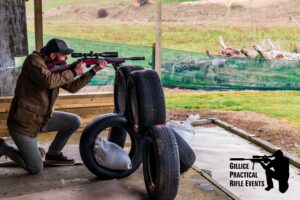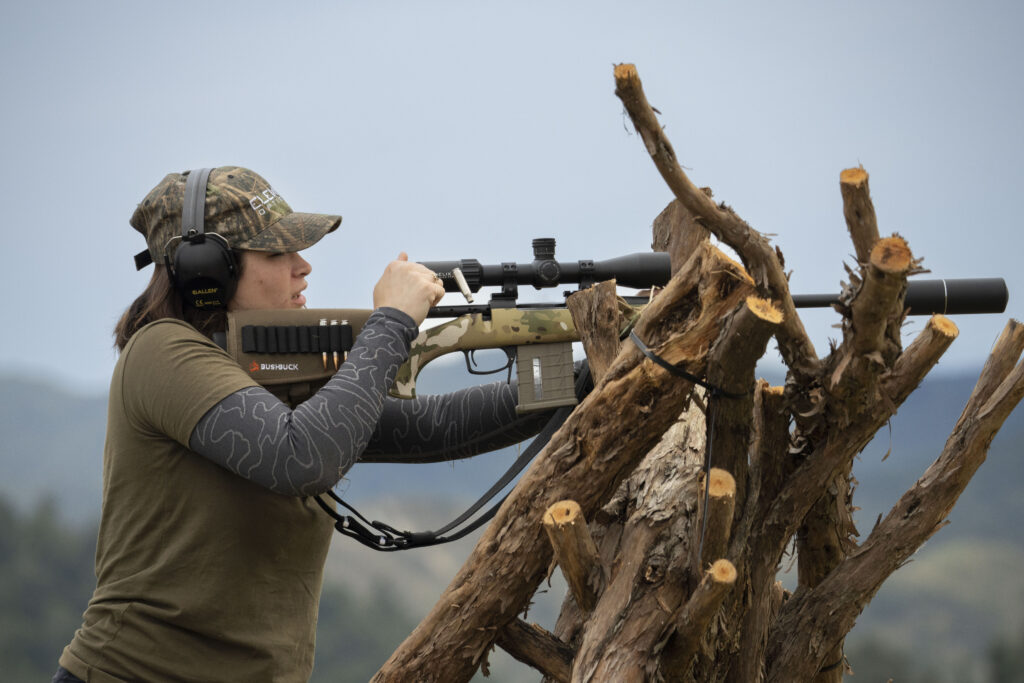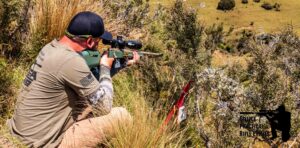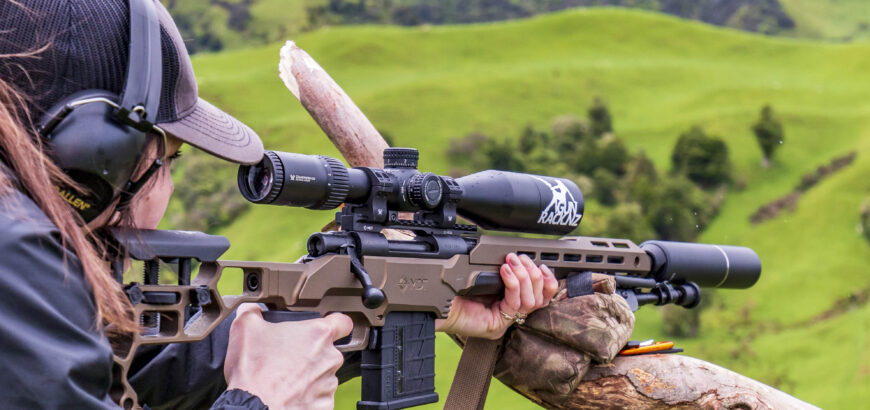If you’re interested in competitive or long range shooting, you’ve probably heard the term “PRS” or noticed the preponderance of new shooting gear aimed at the “precision shooting” market. If you want to understand a bit more about what this is all about, and how you might be able to get involved, this article is a short primer on what is available and happening in New Zealand. We’ll do some follow up articles on what gear you need, basic skills to practice, etc., so keep an eye out for those.
What is PRS?
Precision or practical rifle competitions are not all “PRS Matches”. The PRS (Precision Rifle Series) is a trademarked, sanctioned series of matches in the USA, in which some of the best precision shooters in the world compete. It has developed over the years, and the level of competition and the equipment used has changed dramatically. There are PRS affiliated organisations around the world, notably Australia, South Africa and recently New Zealand.
In a PRS or PRS-style match, you would expect to have around 8 – 10 stages (small courses of fire within the overall match) in a one day match, with varying challenges to test different aspects of your shooting ability. Two day matches are more prevalent overseas and will probably feature more and more in the NZ scene. Two-day matches that have been run locally tend to be the same overall match course of fire, but day two might be .223 only, or some other variation.
Each stage will have a description which will tell you what targets you need to engage, and how you need to engage them – you don’t need to know this stuff in advance. You will also be given a time limit for each stage. If you’re new to the game, concentrate on making good hits instead of trying to be fast. You’ll have more fun if you hit steel, and it will be easier to operate safely and smoothly if you take your time.
What kind of shooting should you expect?

Generally speaking, you would be engaging steel plate targets from 200m out to 700 / 800m, with the occasional long range stage over the 1000m mark. Some dedicated long range events stretch this out further.
Your shooting position is usually built around using a prop or obstacle for support, and you might have to “build and break” several positions on the same prop or multiple props and engage a single target or multiple targets.
There are occasionally prone stages, which would usually be long range stages or stages with a complex order of fire. Some match directors do offer a more prone focused match, whereas others might be more heavy on the positional / prop side of things. Unsupported positional shooting is not very common, but can be expected.
Does this sound like a bit much? Don’t worry. At every match in New Zealand you will find that you will be put in a squad with experienced competitors who are happy to help you out, guide you through the day, and probably even lend you a bit of gear if you need it.
What is Field Shooting?
Field shooting is similar in ways to PRS-style matches, but has distinct differences and challenges different aspects of your shooting, gear management, admin and stage management. For an international comparison, it might be considered to be closer to the NRL Hunter series in the USA.
The Precision Rifle Series has largely developed using “flat ranges” or “square ranges”, with a perpendicular firing line, berms and often fixed target distances. This has lent itself to a lot of standardisation of types of props and stages you might encounter, including several “PRS Skills Stages”, which are the same at every match. Given the sheltered and somewhat artificial environment these kinds of ranges have, the sport has revolved around small targets and tight time limits.

Now, to be fair, not all PRS matches are like this, and depending on the geographical location in the USA, you might have a much more “field style” match. New Zealand matches are trying to emulate the US and Australian matches, but we are generally shooting on farms, not fixed ranges, so our PRS-style matches might favour the field shooting side of things overall.
So, what is field shooting? How is it different? Field shooting is based around the “practical” side of competitive shooting, rather than the “precision” side. Now, just as precision matches might have the occasional field flavour, the same is true in reverse, and depending on location and match director, you might find a lot of props, small targets and tight time frames.
When we say “practical”, we mean using shooting skills that are beneficial in practical scenarios. For most of us this means hunting or pest control. For our military and law enforcement friends, their skills might be deployed in a more “tactical” scenario when they’re on the job.

In field shooting the target sizes and time limits are generally a bit more generous, but the shooting positions are often uncomfortable, improvised, unstable or offer limited visibility of the target(s). This forces you to think on your feet and approach each stage differently, developing a broad set of shooting skills. Precision matches, on the other hand, tend to offer stable props, familiar positions, and somewhat standardised courses of fire, which means you are focusing on a narrower set of skills, but you might become much more proficient at them over time.
There is a lot of crossover between these two styles of shooting, and you’ll often find the same competitors at both types of events. If you start investing in rifles and gear for one, you’ll be able to shoot the other as well. A lot of the same sills will translate across both sports equally well, such as focusing on your natural point of aim, building a solid position, squaring up to your rifle, etc.
If you’re keen on getting into this game, you will shoot in interesting conditions, see some gorgeous country, develop great friendships, and ultimately become a better shooter.
In the next article we’ll talk about how to find local matches and who to follow in NZ for updates on the sport and related content.
*Featured image credit: Gillice Practical Rifle Events*





